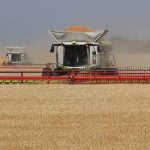When farmers and ranchers discuss herd management over coffee at the local diner, there is often a glazed look on many of the faces as they nod robotically in agreement with the speaker.
“Herd management” has become a fancy all-encompassing term that by its sheer size can suck the air from any room. Every producer uses varying degrees of management, no matter the breeds or hide colours in their pens and pastures, but the subject can be overwhelming.
To demonstrate the innumerable choices a producer could be faced when they consider herd-management decisions, I quickly jotted down a few headings. Cow size, growth and efficiency, weaning and finishing weights, docility, feed conversion, colour, frame size, thickness, resource management, maternal instincts, expanding or decreasing operation size, infrastructure, feed quality, nutrition, vaccinations, direct marketing, preconditioning, biosecurity, animal handling practices, carcass grade and yield, body conditioning scores, software and record-keeping, reproduction and conception rates — my apologies, but this is by no means a complete list of factors to be considered in herd management.
Read Also

Harvest wraps up and fall work begins
At the Eppich famly ranch in western Saskatchewan, the fall harvest was successful with few breakdowns, cows and calves have been sorted and a new tractor has arrived
I’m reminded of the fable of the fox and the cat who were discussing the number of choices they had in order to escape their hunters. The cat claimed one choice while the fox bragged of having many. When the hunters arrived, the cat quickly climbed a tree to safety, but the fox was so busy analyzing all his possible actions, he was captured by the dogs.
Producers should never limit themselves to a single herd-management choice, but on the other hand, how do they counteract with what might be described as “analysis paralysis?” There is another old saying that states, “You cannot manage what you do not measure.” This seems simple but is a good place to start with such a large topic.
Even the best multitasking manager can only absorb a limited number of factors pertaining to operational decisions. Historical information is usually minimally represented. Making intelligent use of herd production and performance records as well as past financial records can be the difference between a mediocre manager and someone with a finger on the pulse of the industry.
Value of proper records
More information should equal more potential when deciding on specific management practices. Several studies have shown that farmers who maintain thorough records have higher levels of performance, measured in terms of productivity (Tomaszewski, 1993) and financial performance (Mishra, Wilson and Williams, 2009).
Beyond the ability to know the numbers, record-keeping can identify areas of strength and weakness. In all production-based decisions, it is good practice to see where other high-performing farms are operating and attempt to align production and financial metrics with them. This process, also known as benchmarking, has been proven to help increase production. In 2016, Manglai, a University of Saskatchewan grad student, with the help of the university in a study of 110 cow-calf producers in Alberta, Saskatchewan and Manitoba, calculated an average of 60 more pounds of calf weaned per cow exposed. Like the list of herd-management choices, there is almost no end to what can be measured. Pounds of calf weaned, conception and calving rates, death losses, calving distributions, body conditioning scores, pregnancy tests, vaccination specifics and dates, health treatments and calving ease are just some of the more popular.
It is impossible to measure everything, so goals must be established in relation to other high-performing operations. Measurements and records should be relatable and transferable to these goals.
For example, if pregnancy-checking compares the number of females successfully bred to the number exposed, a conception rate can be calculated and held against the benchmark. The percentage of females that calve within the first 21 days can be measured against all the cows that calve to provide a calving distribution rate. Each measurement should point toward an action aligned to a goal, not only for the present-day situation, but for one that is years down the road.
The acts of measuring, collecting records and actively using and analyzing the data are often missing from a producer’s management arsenal. It can seem like a lot of work, but there are numerous tools and apps available to make this task easier for even the most technologically challenged. Paper records are better than none, but electronic records have the added benefit of retrieval ease and analysis.
These tasks should serve as the centrepiece of any management plan with the effort invested helping to define the level of success the operation can achieve.















